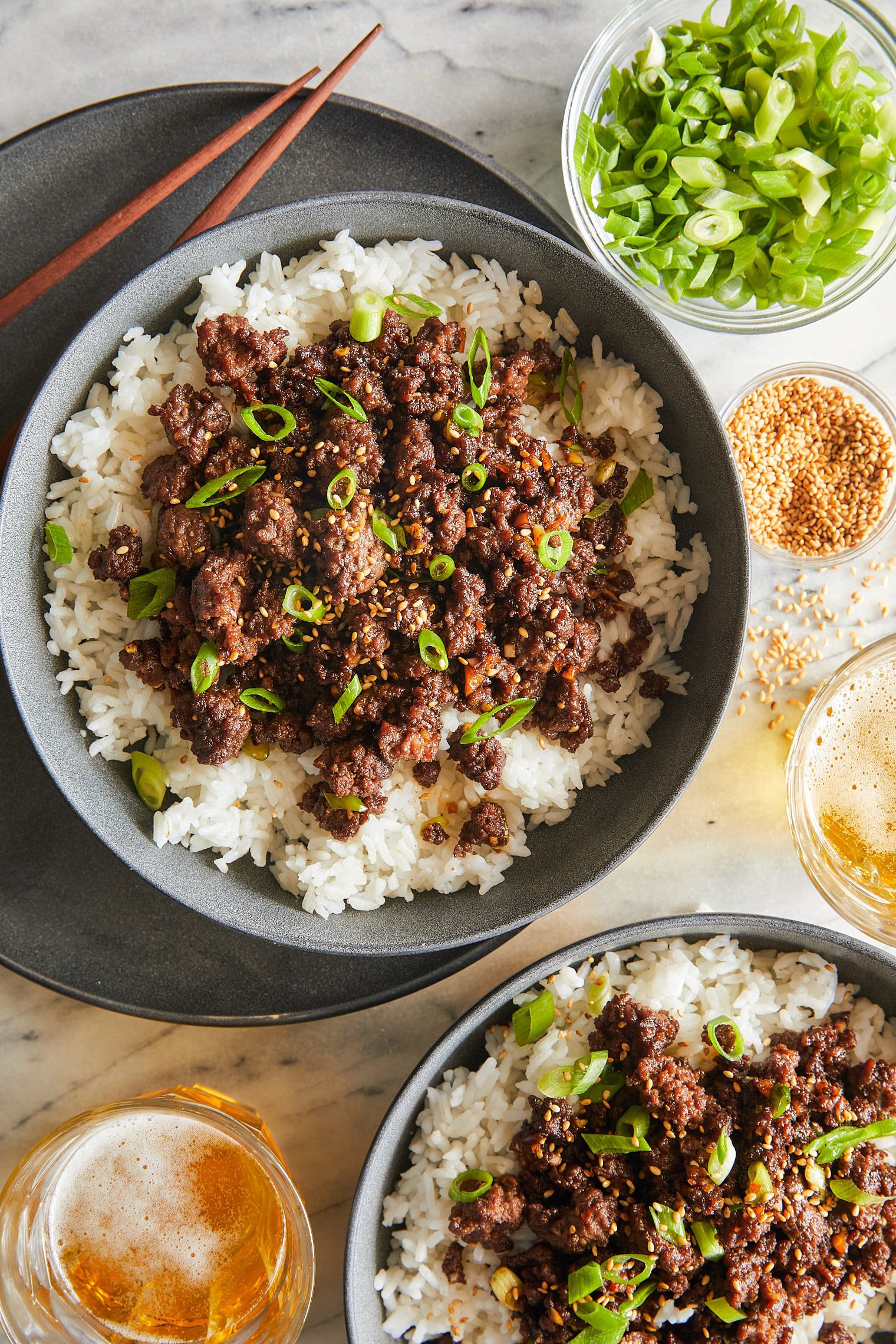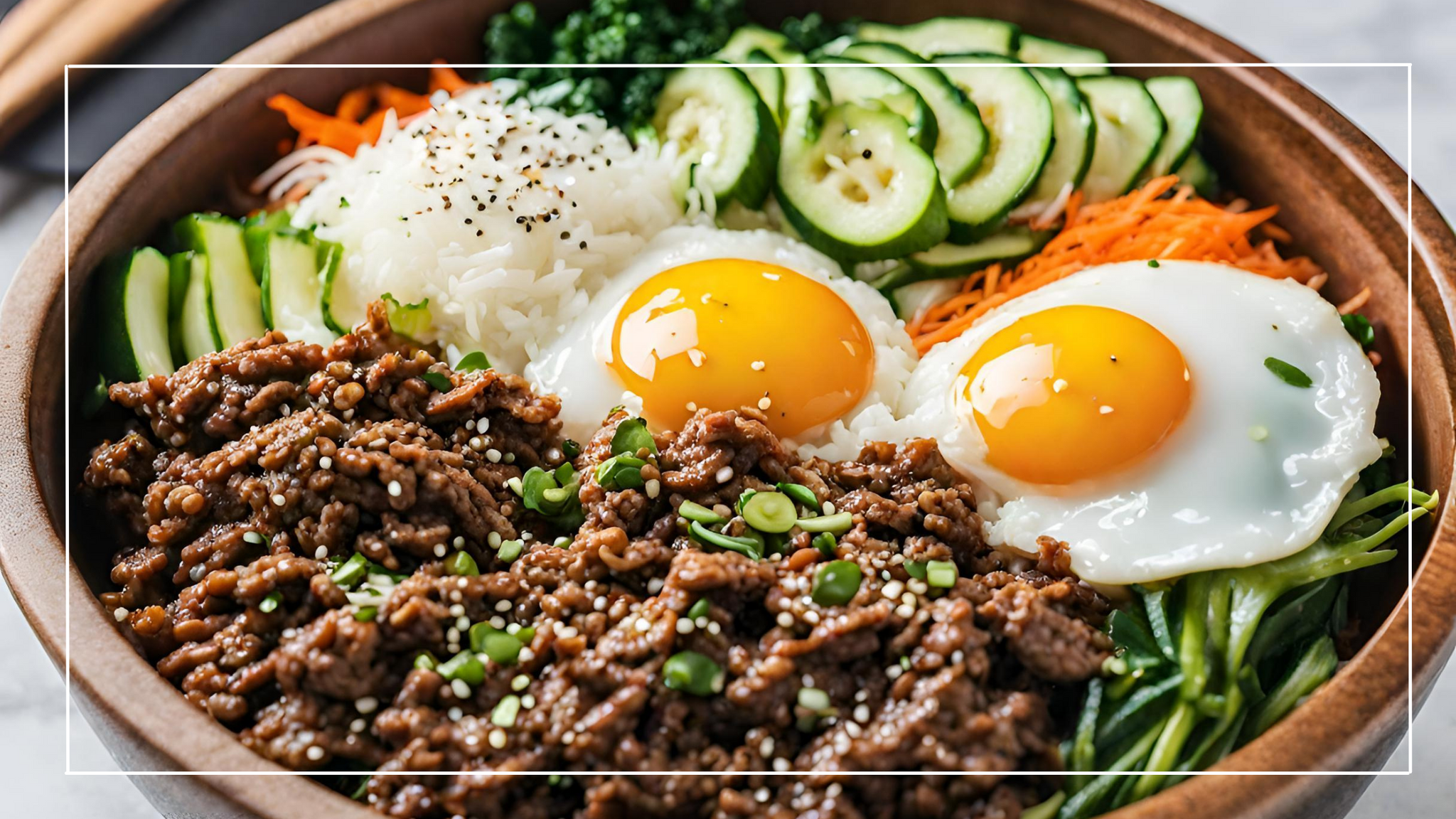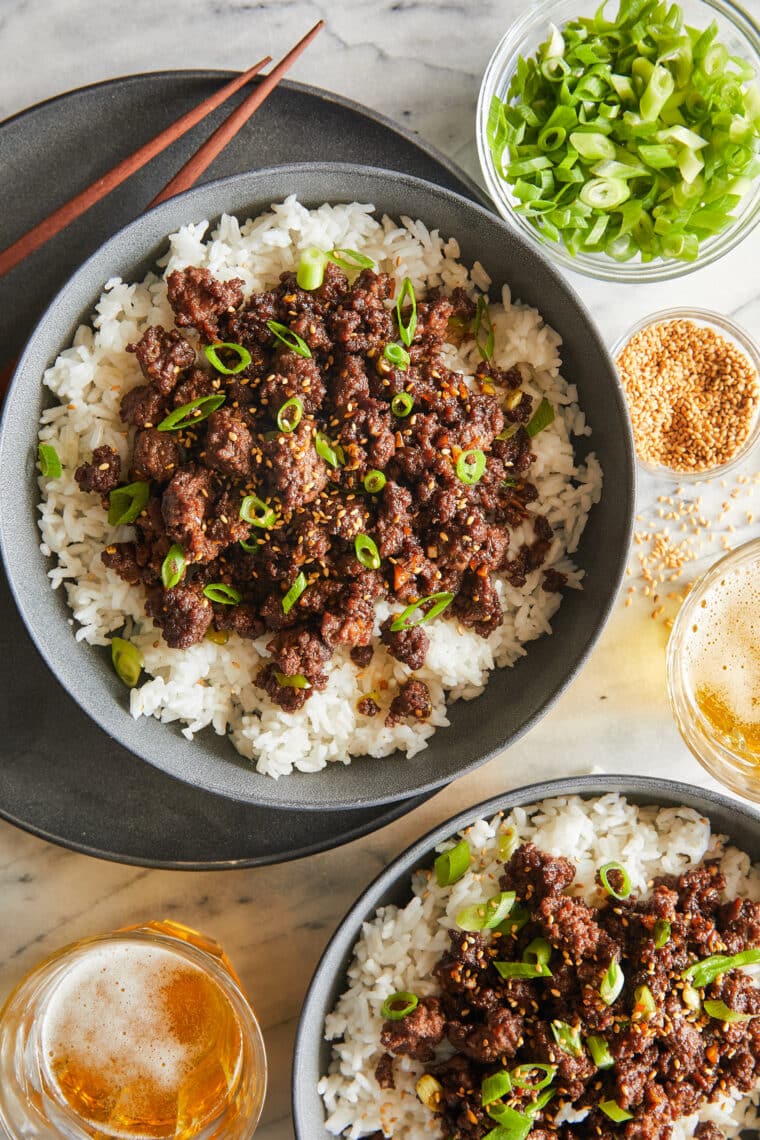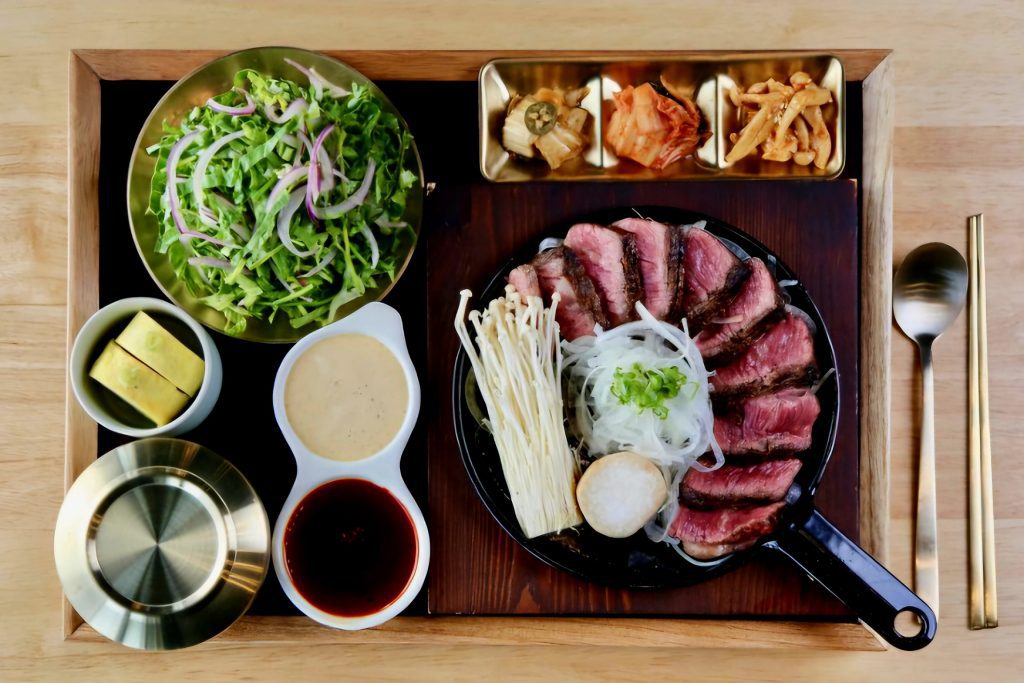Korean Beef Bowl: Flavor Explosion in Minutes
Korean Beef Bowl is the ultimate quick and flavorful meal that delivers restaurant-quality taste in under 30 minutes. This recipe features savory ground beef cooked in a sweet-spicy Korean-inspired sauce, served over rice with crisp vegetables and a perfectly fried egg. What makes it special is how it balances complex flavors – the umami of soy sauce, the sweetness of brown sugar, the nuttiness of sesame oil, and the kick of gochujang create a truly addictive combination.
The magic of this dish lies in its simplicity and versatility. Using ground beef makes it weeknight-friendly, while the sauce comes together from pantry staples. The runny egg yolk creates a luxurious sauce that brings all the elements together. This bowl represents the perfect balance of protein, carbohydrates, and vegetables – a complete meal that satisfies both your taste buds and your hunger.
The History of Korean Rice Bowls
Korean rice bowls (bibimbap) date back to the Joseon Dynasty (1392-1910), when royal kitchens would mix leftover ingredients with rice. The modern version became popular in the 20th century as a quick, nutritious meal. Our ground beef variation reflects the Korean-American fusion that developed in LA’s Koreatown.

The term “bibimbap” means “mixed rice,” referring to the tradition of mixing all ingredients together before eating. Our version simplifies the preparation while maintaining the essential flavor balance that defines Korean cuisine.
Ingredient Selection Guide
Beef: Ground chuck (80/20) provides best flavor. For leaner option, use ground sirloin. Korean ground beef bowls often use bulgogi-marinated beef, but ground works beautifully.
Gochujang: This fermented chili paste is essential. Look for authentic Korean brands. Store in refrigerator after opening. Substitute with sriracha if unavailable, but flavor will differ.

Vegetables: Traditional bibimbap includes spinach, bean sprouts, and shiitake mushrooms. Our version uses accessible carrots and cucumber. Julienne vegetables uniformly for best texture.
Eggs: Farm-fresh eggs with vibrant yolks make the dish. Cook sunny-side up with runny yolks for authentic experience.
Step-by-Step Cooking Mastery
1. Beef Browning: Cook beef without stirring for 2-3 minutes to develop fond. Break into small crumbles. Drain excess fat but leave 1 tbsp for flavor.

2. Sauce Integration: Add sauce to hot pan – it should sizzle and bubble. Simmer until thickened to glaze consistency, about 3 minutes.
3. Vegetable Prep: For extra flavor, quick-pickle carrots in rice vinegar and sugar for 15 minutes. Blanch cucumber slices briefly.
4. Egg Technique: Fry eggs in sesame oil for extra flavor. Cover pan to steam tops for perfect runny yolks.
Nutritional Benefits
One bowl provides:
– 35g high-quality protein
– Vitamin A (110% DV) from carrots
– Probiotics from fermented gochujang
– Healthy fats from sesame oil and egg yolks
– Complex carbohydrates from rice
For healthier version, use cauliflower rice, lean ground turkey, and extra vegetables. Add kimchi for probiotics.
Customizations for Every Taste
Spicier: Add gochugaru (Korean chili flakes)
Vegetarian: Substitute beef with crumbled tofu
Gluten-Free: Use tamari instead of soy sauce
Lower Carb: Serve over zucchini noodles
Extra Vegetables: Add spinach, mushrooms, or bean sprouts
Professional Chef Techniques
Restaurant secrets:
1. Marinate beef in 1 tbsp pear juice for tenderness
2. Add 1 tsp fish sauce for umami depth
3. Garnish with nori strips for ocean flavor
4. Serve in hot stone bowl (dolsot) for crispy rice
Serving and Presentation
For beautiful presentation:
1. Arrange components in rainbow pattern
2. Place egg in center like a jewel
3. Garnish with sesame seeds and scallions
4. Serve with gochujang on the side
5. Provide chopsticks and deep spoon
Pair with barley tea or soju. For non-alcoholic option, choose sikhye (sweet rice drink).
Storage and Meal Prep
Perfect for meal prep:
– Refrigerate: 4 days (store components separately)
– Freeze: Beef mixture 3 months
– Reheat: Beef gently on stove, assemble fresh
– Meal Prep: Layer in jars – sauce, rice, beef, vegetables (egg added fresh)
The Science of Umami
This dish exemplifies umami – the fifth taste:
– Glutamates: From soy sauce and beef
– Nucleotides: From beef
– Fermented flavors: From gochujang
– Synergy: Combined elements enhance each other
Understanding umami helps balance flavors. If dish tastes flat, add dash of fish sauce or soy sauce.
Cultural Significance
This bowl represents Korean culinary philosophy – balance of flavors (sweet, salty, spicy, sour) and textures. The communal aspect of shared bowls reflects Korea’s dining culture focused on togetherness.
Final Thoughts
As you mix your bowl, appreciate how this dish brings together tradition and convenience. May it become a weeknight favorite that nourishes both body and soul, creating delicious memories with every satisfying bite.

Korean Beef Bowl
Ingredients
Method
- Brown ground beef in skillet, breaking into small pieces
- Add garlic and ginger, cook 1 minute
- Whisk sauce ingredients together
- Add to beef, simmer until thickened
- Divide rice among bowls
- Top with beef, vegetables and fried egg
- Garnish with sesame seeds



